![Best GPU without External Power [2025] Tested](https://www.ingameloop.com/wp-content/uploads/Best-GPUs-without-External-Power.jpg)
Modern graphics cards are power-hungry, making it expensive for the user to play high-end games. The graphics cards without external power use less power so are power efficiency. In this way, it saves the gamer from paying more money to get an appealing gaming experience. Instead of having a power connection to the PSU, such cards draw energy uniquely from the mother circuit. Hence, your rig can perform effectively while utilizing lesser power without compromising performance.
But bottlenecks often happen when you connect a lightweight GPU with an efficient CPU. You must pay attention to the compatibility between the processor and graphics card to avoid lag, bottlenecks, and other issues. Furthermore, you might hear that lower power requirements of a video module might cause a lesser performance than those with a higher power. This statement may be true if you haven’t gathered enough knowledge before buying graphics cards without external power. But don’t worry. We have tested several graphics cards but added a few to the list in this post. You must check all the cards before choosing one.
Shopping Tips for Selecting GPU Without Power Connector
For ease of finding gpu without power connector for your rig, consider the factors listed below. You can fastly figure out whether a card will fulfill your needs or not by looking at these must-have factors.
Budget and Brand: How can we ignore the customer’s budget and the brand? Try to find out a card according to your pocket and budget. You can find one affordable for every user and customer with a slightly lower budget. Choose the brand with the specialty it is famous for; if you need more cores, buy one that offers more.
Memory size: The first and foremost crucial factor someone can check is the total memory a card offers. Cards with higher memory can load more data and perform better by rendering fast. Also, more significant memory can permit a more fantastic in-game depth view and produce good quality visuals and scenes. You can decide the memory size depending on the game load you will put on.
Cores: A core is like a pathway inside a card to process an instruction. The cores are the main brains of the component that process the data being fed into the GPU and calculate information regarding gaming graphics to show the user. Make sure you get many CUDA cores for more detailed and realistic pictures.
Core Frequency: The clock speed measures how fast a core can process an instruction. A GPU generally operates fast if it has a higher clock frequency and can process multiple instructions every second. It is usually measured in GHz (gigahertz) and sometimes in MHz (megahertz). Make sure to buy a card with a higher clock speed as possible.
Overclocking: Every graphics card comes with a specific base clock speed that can increase up to a specific boost clock—the margin between the both is the overclocking or overclocking headroom. A card with an 80-200MHz overclocking margin is considered suitable for the current-era workloads. Remember, a high headroom is better, so you must try to buy a card with as high overclocking headroom as possible.
The Best GPUs without External Power You Can Buy Today
| Award | Design | Best | Retailer |
|---|---|---|---|
| Best Graphics Card for Cooling | 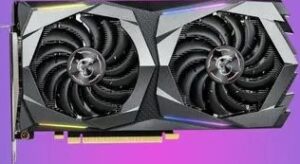 | View on amazon | |
| Best All-Rounder Graphics Card Without External Power | 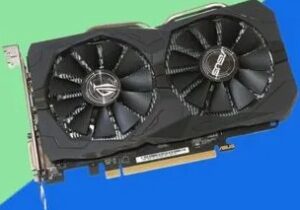 | View on amazon | |
| Best Entry-Level Graphics Card With Lowest Power Consumption | 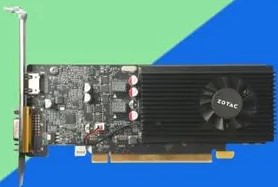 | View on amazon | |
| Best Low Profile GPU Without External Power | 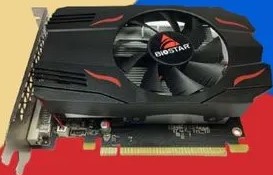 | View on amazon | |
| Best Graphics Card for Esports Gaming | 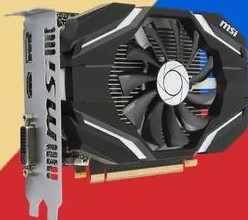 | View on amazon | |
| Best Mid-Range Graphics Card Without External Power | 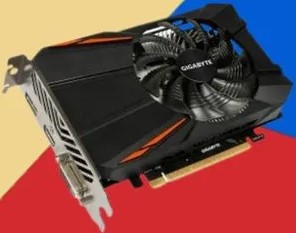 | View on amazon | |
| Best Enthusiast Low Power Graphics Card | 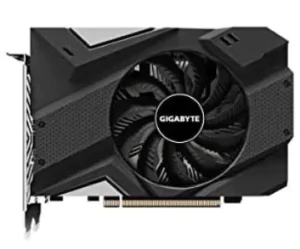 | View on amazon | |
| Best Overall GPU Without External Power | 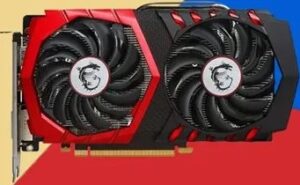 | View on amazon |
MSI GeForce GTX 1660 Ti X 6GB
Best Graphics Card for Cooling

Brand: MSI | Series/Family: GeForce GTX 10 series | GPU: Nvidia 12nm Turing TU116 GPU unit | GPU architecture: Nvidia Turing architecture | Memory: 6GB GDDR6 | Memory bus: 192-bit | Memory clock speed: 12000MHz| CUDA cores: 1536 | Cache: 1.5MB L2 | Base Clock: 1500MHz | Game clock: Unknown | Boost clock: 1770MHz | Power Consumption: 120W | Cooling fans: Dual TORX FAN 4.0 | Display Connectors: 1x DisplayPorts, 1x HDMI, 1x DVI
REASONS TO BUY
✓Excellent price-to-performance ratio
✓Amazing cooling capabilities
✓Can be overclocked
REASONS TO AVOID
✗May be expensive
The MSI GeForce 1660 Ti GDDR6 is a no external power gpu that offers similar features as other RTX cards do while being less expensive. For example, powered by Turing architecture, the component comes with a 12 nm fabrication procedure that runs the RTX line of the cards. The only difference is that it offers lesser ray-tracing and tensor cores that set this GTX card apart from the other RTX cards. Compared to the GTX 1060 and 1070 lines, you get a minimized die size of 284 mm², more transistors (6.6 billion), and a low power requirement of 130 watts which is good news.
If we look at its specifications sheet, the card offers a basic pack of 6GB of GDDR6 memory with a 192-bit memory bus to store and transfer the data with a memory speed of 12 Gbps. It runs with 1875 MHz clock speed. We could use 3x DisplayPort v1.4a type outputs and 1x HDMI port to connect where HDMI supports 4K resolution at 60 Hz if specified in the 2.0b version. It has 247 mm x 127 mm x 46 mm dimensions and a weight of 869 grams.
Looking at the product’s design, you’ll find that black is mixed with gunmetal grey, providing premium aesthetics. Also, the classy brushed metal backplate highlights the attractive look and provides a more substantial and rugged build. Other than that, it’s an excellent product in terms of cooling, as the title of the best graphics card for cooling stipulates. It provides the ultimate heat-killing thermal solution, evident with a fantastic masterpiece. The 7th generation MSI TWIN FROZR design is paired with TORX FAN 3.0 technology to guarantee a stable and efficient performance.
ASUS Radeon RX 460 4GB
Best All-Rounder Graphics Card Without External Power

Brand: ASUS | Series/Family: GeForce GTX 10 series | GPU: Nvidia 14nm Baffin XT GPU unit | GPU architecture: AMD GCN 4.0 architecture | Memory: 4GB GDDR5 | Memory bus: 128-bit | Memory data speed: 7Gb/s effective | Stream processors: 896 | Cache: Unknown | Base Clock: 1090MHz | Game clock: Unknown | Boost clock: 1200MHz | Power Consumption: 75W | Cooling fans: Dual fan setups | Display Connectors: 1x DisplayPorts, 1x HDMI, 1x DVI
REASONS TO BUY
✓Impressive eSport gaming performance
✓Excellent for 1080p gaming experience
✓All-rounder performance
REASONS TO AVOID
✗May be expensive
We have chosen the ASUS STRIX Gaming edition as the best all-rounder graphics card due to a number of reasons. There are two variants of the ASUS Radeon RX 460 card, 4 GB and 2 GB, where we will review the predominant 4GB version. The card offers a memory clock speed of 7000 MHz and can boost up to 1256 MHz of frequency. It comes with AMD’s Polaris architecture as expensive cards, RX 470, and RX 480 series. This architecture stands toe-to-toe against the card with NVIDIA’s Pascal architecture in terms of performance but lags in power efficiency.
The gamers can play eSports and low-end AAA titles games at Full HD settings and every other, which requires a fair amount of processing power. The rear panel of the card exposes one dual-link DVI-D output port, one HDMI 2.0b, and a DisplayPort 1.3 connector. The other features and specifications show that the card can deliver 1080p quality at 120 Hz but not more than HD+. If you want to use it for 1440p resolution, you may feel some tearing on display during the rapid movement inside the game. So, those working out with HD graphics can go for this card.
There is still a lot to discuss this card to truly know its capabilities. Like, it comes with DirectX 12, OpenGL 4.6, and OpenCL 2.1 technologies for enthusiasts. The brand has submitted numerous features to tackle the heat issue. We get Direct-CU II which offers heat pipes directly contacted. To properly transfer the heat, the two heat pipes loops are installed to keep the temperature below 60 °C. But remember, this product could be an effective option if you put in a moderate gaming load, like HD graphics. Otherwise, you can look for the higher-end variants of the brand.
ZOTAC GeForce GT 1030 2 GB GDDR5
Best Entry-Level Graphics Card With Lowest Power Consumption

Brand: Zotac | Series/Family: GeForce GT 10 series | GPU: Nvidia 14nm GP108 GPU unit | GPU architecture: Nvidia Pascal architecture | Memory: 2GB GDDR5 | Memory bus: 64-bit | Memory data speed: 6Gb/s effective | Shading cores: 384 | Cache: 512KB L2 | Base Clock: 1228MHz | Game clock: Unknown | Boost clock: 1468MHz | Power Consumption: 30W | Cooling fans: Single fan setups | Display Connectors:1x HDMI, 1x DVI
REASONS TO BUY
✓Affordable
✓Low-profile card
✓Quieter fan movement
✓Shallow 30W power consumption
REASONS TO AVOID
✗Slow in multi-rendering
This time, NVIDIA has played very wisely with ZOTAC GeForce GT 1030 and allowed the users to buy an awesome performing graphics card without power connector at an affordable price point. The GPU has a basic pack of 2 GB of GDDR5 memory that can run at 1500 MHz of memory clock speed with 46.1 GB/s of bandwidth. Also, the GPU has 384 CUDA cores and a 64-bit memory bus that is still good at this price. The Pascal architecture powers this entry-level chip and can help you enjoy lightweight games without spending much. Another plus point, you can connect up to two monitors with multi-display capabilities.
The card comes with 1228 MHz of the base clock frequency, reaching up to 1468 MHz. The GPU speed keeps alternating between the base and boosted ones for different temperature ratings during the Furmark stress test. Hence, you must maintain a suitable temperature to get maximum performance and keep the speed high. The component has 172.5 mm x 111.15 mm x 16 mm dimensions. You can put this module into a vast number of the smallest PC cases due to its low-profile PCB build. Overall, this can not be perfect for performance but is for an affordable price.
We are calling this card the best entry-level graphics card with the lowest power consumption due to its affordable price and efficient power usage. The default TDP would be hardly 30 watts, making the product have the lowest power consumption on our list. In short, you won’t have to worry about those hefty electricity bills that you get for playing games. Hence, this feature gives it an edge over others in the market. Users can connect the displays to one VGA and one HDMI 2.0b port, where HDMI can provide 4K content at 60Hz—it lacks DisplayPort to take this fact into your consideration.
VIEW MAX Biostar RADEON RX 550
Best Low Profile GPU Without External Power

Brand: View Max | Series/Family: Biostar Radeon RX | GPU: AMD 14nm Lexa Pro GPU unit | GPU architecture: AMD 4th-gen GCN architecture | Memory: 4GB GDDR5 | Memory bus: 128-bit | Memory data rate: 7Gb/s effective | Shading units: 512 | Cache: 512KB | Base Clock: 1100MHz | Game clock: Unknown | Boost clock: 1183MHz | Power Consumption: 50W | Cooling fans: Single fan setup | Display Connectors: 1x DisplayPorts, 1x HDMI, 1x DVI
REASONS TO BUY
✓Affordable
✓Low-power card
✓Offers 4K resolution for low-end games
✓AMD Radeon FreeSync technology
REASONS TO AVOID
✗No G-Sync technology
✗Build might be not impressive
VIEW MAX is one of the leading manufacturers of graphics cards, especially when it comes to making one that consumes less power and is extremely affordable. The brand’s Biostar Radeon RX 550 is proof of this fact. The manufacturer offers this under the hood of the best budget GPU without external power with economical pricing and only 50 watts of rated power consumption. Compared to the top-tier cards with external power connection, this card consumes way less power to save money. Out of two variants, 2GB and 4GB, the 4GB variant on our list offers GDDR5 memory with a 128-bit data transfer bus.
Despite being low-power, the card can operate its 512 CUDA Core processors at 1183 MHz of clock frequency. Some other reasons to call it the best GPU are its Vulkan Optimized, HDR Ready, and other technologies like AMD Radeon FreeSync technology, AMD XConnect, and DirectX 12. The FreeSync technology permits a smooth display under the action of high-end games, overcoming the tearing across the display. DirectX 12 enables gaming developers to customize the graphics effects of the games based on the Windows system. Other than the plastic built, this card won’t have many cons.
Three types of ports are given for output connection: Display port 1.4 HDR, HDMI, and Dual-link DVI-D port. Most importantly, we can use all three connections simultaneously with AMD Radeon technology and play low-profile games on multiple screens. Whereas the HDMI supports a digital resolution of 4096 X 2160 and VGA connection up to 2048 X 1536. The card supports PCIe 3.0 interface, and we can connect this with any motherboards that offer the same interface connection. We get heatsinks to dissipate the heat, but no heatsink pipe can be slightly on the lower-performance side—this is another downside.
MSI GeForce GTX 1050 2G OC
Best Graphics Card for Esports Gaming

Brand: MSI | Series/Family: GeForce GTX 10 series | GPU: Nvidia 14nm GP107 GPU unit | GPU architecture: Nvidia Pascal architecture | Memory: 2GB GDDR5 | Memory bus: 128-bit | Memory clock speed: 7Gb/s effective | Shading units: 640 | Cache: 1MB L2 | Base Clock: 14051MHz | Game clock: Unknown | Boost clock: 1518MHz | Power Consumption: 75W | Cooling fans: Single fan setup | Display Connectors: 1x DisplayPorts, 1x HDMI, 1x DVI
REASONS TO BUY
✓Affordable
✓Low-power card
✓Can overclock
REASONS TO AVOID
✗Don’t have RGB lights
The MSI GeForce GTX 1050 2G OC is an entry-level graphics card to handle the basic types of usage with its mediocre performance. As far as the specifications matter, it has 2 GB of GDDR5 type memory, which is offered in all GeForce GTX 1050 series and has a 128-bit memory bus. The card has 640 CUDA Cores at a boost clock speed of 1518 MHz based on the advanced Pascal architecture. It is the best graphics card since it’s affordable, plus it runs on a Pascal-based graphics architecture. If we compare it with the GTX 750 Ti, you get way more advanced and latest features.
Further, Nvidia has mentioned the “OC” in the component’s name, which means it is ready to overclock. You can boost the 1404 MHz of rated base frequency to 1518 MHz, which is quite a small overclock gap. As GPU Boost 3.0 technology has been added to the components, it will be able to boost the speed beyond the rated one. By looking into the cards of other brands in the same price point, MSI has not included the “one-click” features that are used to overclock the component by just tapping an overclock setting in the software program. Despite so much, it needs only 75 watts of power to operate.
You get a DisplayPort 1.4 version, one HDMI 2.0b, and one DL-DVI-D type output port for connectivity purposes. Also, an PCIe x16 3.0 type expansion interface bus to use for future expansion options. Overall, this GPU with a pocket-friendly price, compact size, and single fan design with a heatsink. Despite having a dual-slot structure, it can be fit into mini-ITX cases due to its compact PCB length. Since it is a very basic GPU, we do not have much to discuss. The brand has given no flashy features like RGB lighting to cut the price and keep it as low as possible.
Geforce GTX 1050 Ti G1 Gaming 4G
Best Mid-Range Graphics Card Without External Power

Brand: MSI | Series/Family: GeForce GTX 10 Gaming series | GPU: Nvidia GP107 GPU unit | GPU architecture: Nvidia Pascal architecture | Memory: 4GB GDDR5 | Memory bus: 128-bit | Memory speed: 7.11Gb/s effective | Shading units: 768 | Cache: 1MB L2 | Base Clock: 1366MHz | Game clock: Unknown | Boost clock: 1480MHz | Power Consumption: 75W | Cooling fans: Dual fan setup | Display Connectors: 1x DisplayPorts, 3x HDMI, 1x DVI
REASONS TO BUY
✓High-quality build
✓Effective cooling
✓4K and 8K resolution
REASONS TO AVOID
✗Maybe slightly expensive
The GIGABYTE G1 series graphics cards are very famous for providing a fast, more smooth, and power-efficient gaming experience. The series is powered by NVIDIA Pascal architecture that brings incredible gaming performance with its revolutionary updates and features. The GeForce GTX 1050 Ti G1 Gaming 4G is one of those gpus that don’t require external power card and it offers the same 4 GB GDDR5 type memory as the previous Biostar Radeon RX 550, but it has way more memory clock speed of 7008 MHz. Its competitive pricing and excellent value for money make it the best mid-range graphics card, with 768 CUDA cores.
In OC mode, you can run its cores with up to 1506 MHz of clock speed, reducing to 1430 MHz in gaming mode. The expansion slot is significant for any card to connect with the mobo. We get PCIe 3.0 x 16 interface, which is a pretty fast 3rd generation card bus that can reach up to a total bandwidth of 16 Gbps. You will be impressed with its multi-display feature, which can accommodate up to four monitors at a time. It offers three types of outputs: dual-link DVI-D, HDMI 2.0b, and DisplayPort 1.4 to make multi-monitor support practically possible.
The product offers a rigid and protected build with a metal backplate that provides a sleek and clean look. The PCB sheet of the card has an ATX form factor, while the card has overall dimensions of 40 mm x 219 mm x 118 mm based on the sheet structure. The cooling system is the ultimate solution to keep heat dissipation under control. There are two 90 mm unique blade fans based upon WINDFORCE cooling technology. The alternate spinning direction of the fans and two copper heat pipes provide an ultimate solution to minimize the heat effect—the card’s cooling performance is excellent.
Gigabyte GeForce GTX 1650 OC 4G
Best Enthusiast Low Power Graphics Card

Brand: Gigabyte | Series/Family: GeForce GTX 10 series | GPU: Nvidia 12nm TU117 GPU unit | GPU architecture: Nvidia Turing architecture | Memory: 4GB GDDR5 | Memory bus: 128-bit | Memory data speed: 8Gb/s effective | Shading cores: 896 | Cache: 1MB L2 | Base Clock: 1485MHz | Game clock: Unknown | Boost clock: 1710MHz | Power Consumption: 75W | Cooling fans: Dual fan setups | Display Connectors: 1x DisplayPorts, 2x HDMI
REASONS TO BUY
✓Temperature-controlled fans
✓Good entry-to-mid level 1080p performance
✓One of the Fastest GPUs
REASONS TO AVOID
✗No SLI support
The Gigabyte GeForce GTX 1650 OC 4G is a gpu that doesn’t need external power introduced by NVIDIA as a mainstream graphics card based upon Turning architecture. This card is a successor to GTX 1050 and 1050 Ti-powered by Pascal architecture. Stats stipulates that this card performs 30% more efficiently than the GTX 1050 Ti and can run modern AAA title games with a reasonable FPS rate. You get a new TU117 GPU incorporating 896 CUDA Cores and 4 GB of GDDR5 memory running at 8002 MHz of memory clock speed. The card is built on a custom PCB with an ATX form factor and has dimensions of 191 mm x 112 mm x 38 mm.
There is a DisplayPort 1.4 type port and 2x HDMI 2.0b connectors for connectivity. Like MSI GeForce GTX 1050 Ti, the graphics module carries no SLI support. It seems the company was well-aware of the cruciality of the long life of the component. All the elements that are being used have an ultra-durable structure. The rated power consumption of 75 watts and other features makes it the best enthusiast graphics card. Despite the low power consumption, the energy losses are reduced to negligible by minimizing the core losses and EMI interferences.
The clock frequency can be boosted up to 1710 MHz with an effective cooling system, suitable for such a card. You get a dual WINDFORCE 2X cooling system where an aluminum heat sink is also connected to overcome heat production. There are 2x 80 mm unique blade fans continuously rotating in opposite directions to avoid air turbulence. If you noticed, this gpu offers pretty much the same thermal feature as Geforce GTX 1050 Ti G1 Gaming 4G was offering. Consider this a precise option for someone who needs jaw-dropping 1080p experience before selecting a card without external power.
MSI GeForce GTX 1050 Ti Gaming X
Best Overall GPU Without External Power

Brand: ASUS | Series/Family: GeForce GTX 10 series | GPU: Nvidia 14nm GP107 GPU unit | GPU architecture: Nvidia Pascal architecture | Memory: 4GB GDDR5 | Memory bus: 128-bit | Memory data speed: 7Gb/s effective | CUDA cores: 768 | Cache: 1MB L2 | Base Clock: 1354MHz | Game clock: Unknown | Boost clock: 1468MHz | Power Consumption: 75W | Cooling fans: Dual fan setups | Display Connectors: 1x DisplayPorts, 1x HDMI, 1x DVI
REASONS TO BUY
✓Silent performance
✓Best price-to-performance ratio
✓TwinFrozr VI cooler
REASONS TO AVOID
✗No SLI support
Once again, we have another card from MSI. It’s none other than the MSI GeForce GTX 1050 Ti, a more advanced version of GTX 1050 based on Nvidia’s Pascal architecture. The brand has included the same GPU architecture as in the top-of-the-line GTX 1060, 1070, and 1080 series cards. The MSI GeForce GTX 1050 Ti is the most powerful gpu without external power that offers 4 GB of GDDR5 memory that runs at 7000 MHz of memory frequency with a 128-bit memory bus. Other than that, it has 768 CUDA Cores and a 1290 MHz of clock speed that can boost up to 1392 MHz. If we compare it with the 1050 and 1050 Ti, it has 128 more cores and 2 GB higher memory capacity.
The card is renowned for being the best overall GPU without external power on our list due to numerous reasons. You can buy this budget graphics unit to play AAA title games at Full HD settings and even do mediocre content creations without any lag or other issues. In simple terms, it can tackle possibly every game in the market. For connectivity purposes, the component’s rear has been installed with 1 x DisplayPort, 1 x HDMI 2.0, and 1 x Dual-link DVI connectors that come with the higher-end GTX 10 series. The HDMI can support 4K resolution at 60Hz, but anything above 4K or 60 Hz is impossible with this card.
The MSI uses highly effective and advanced Twin Frozr technology VI to dissipate the heat in no time. If we look at the statistics, the Twin Frozr VI is 40% quieter and provides 20% more cooling compared to its previous version, Twin Frozr V. Despite the excellent cooling capabilities, and the silent fan movement is the key feature to making the gaming experience more appealing. Moreover, the G-sync ensures the non-teared screen result by perfectly wisely playing with frequency and graphics FPS rate. On the other hand, some downsides include no backplate, no SLI support, and a rise in temperature for OC mode.
Conclusion
A graphics card is one of the essential computer elements, especially for those who play games and do content creation on their PCs. But you must remember that top-tier cards consume very high power and may result in a more power-usage bill. Well, if you’re a user who doesn’t do top-tier gaming or 3D rendering, the best GPU without external power must be your priority. The reason behind this statement is that it will give an adequate performance to tackle your mediocre loads, plus it won’t consume much power while operating at its peak.
If you are a user who needs an affordable GPU to power up your rig, you can go for ZOTAC GeForce GT 1030, MSI GeForce GTX 1050, or VIEW MAX Biostar RADEON RX 550. While the overall winner on our list is MSI GeForce GTX 1050 Ti, a perfect combination of performance, build, and price. Choosing an ideal match for your rig is a highly complex task that requires research and homework. If you have different usage and want to purchase some other card, then you can check the other products on the list and read their reviews while checking the pros and cons to make it easy to select one.
Frequently Asked Questions
Can you use a GPU without external power?
Yes, we can use a GPU without external power. Every brand offers numerous graphics cards that can run while directly connecting to the motherboard. These chips utilize a meager amount of energy and still provide adequate performance. Hence, using such components is very power efficient.
What GPU does not require external power?
The modern graphics modules required a very high amount of energy to function correctly. Every brand is trying to lower the power requirement of the cards to help users save their resources and power. The video modules that can run while directly connecting to the motherboard instead of PSU need no external power.
Are mini graphics cards less powerful?
Saying that the cards with mini form factors are less powerful is not valid. Moreover, there is no direct connection of the performance to the size of the component. GPUs and their mini-equivalents use the same chips and software in the current era; the performance would be the same. Although, you may feel the difference in cooling capabilities of such pieces.
Do all GPUs need a power supply?
Do all GPUs need a power supply? It is not valid that every GPU needs a direct power supply. The market is full of those chips which require no power supply but are connected to the mobo to fetch energy. Such cards are very effective while saving your day-to-day usage and expense. You should go for the cards without an external power to protect your bank from breaking.


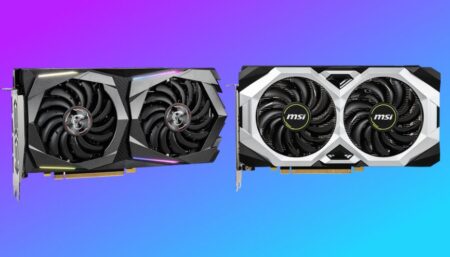
![Best GPU for Ryzen 7 3700X [Updated] 2025](https://www.ingameloop.com/wp-content/uploads/Best-GPU-for-Ryzen-7-3700X-450x257.jpg)
![Best GPU for Ryzen 5 3400G [Updated]](https://www.ingameloop.com/wp-content/uploads/Best-GPU-for-Ryzen-5-3400G-450x257.jpg)


